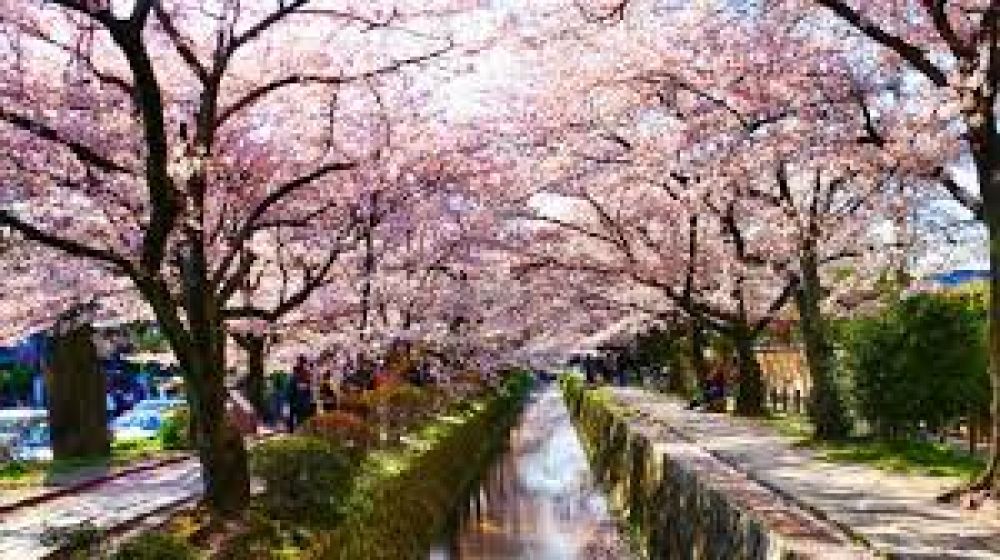

The Philosopher's Path (Tetsugaku-no-michi) in Kyoto, Japan, is one of the city’s most charming and popular walking trails. Named after the esteemed philosopher Nishida Kitaro, who was said to meditate while strolling this route on his daily commute to Kyoto University, the path runs alongside a canal lined with hundreds of cherry trees. Situated in the scenic Higashiyama district, this stone path offers a tranquil experience, particularly during cherry blossom season in early spring.
The Philosopher's Path has long been a magnet for those seeking contemplation and inspiration. It gained wider attention as a tourist destination in the post-war period when Japan's tourism industry blossomed, and Kyoto became famous for its classical architecture and historical significance. The path itself doesn't have a long history as a tourist attraction, as it is a relatively modern addition to the city, constructed during the Meiji period in the 1890s.
Initially, the route was mostly frequented by locals and students from the nearby university. However, as Kyoto's reputation grew as a cultural hotspot, the Philosopher's Path began to catch the eyes of international tourists.
The biggest draw to the Philosopher’s Path has been the hanami season when the cherry blossoms are in full bloom. During this time, usually late March to early April, the path is alive with color and vibrancy. Tourism peaks as visitors from around Japan and the world wander the two-kilometer stretch, which becomes an ephemeral tunnel of pink and white blooms, to engage in the traditional practice of hanami, or "flower viewing."
In addition to the natural beauty of the cherry blossoms, the Philosopher’s Path is dotted with temples, shrubs, cafes, and boutiques, enticing tourists with culture and refreshments. Notable sites along the path include the Silver Pavilion (Ginkaku-ji), Nanzen-ji Temple, and numerous smaller temples and shrines. The combination of history, culture, and nature has solidified the Philosopher's Path as one of the jewels in Kyoto’s tourism crown.
In recent years, the trend of experiencing locales through the eyes of a resident has influenced tourism around the Philosopher’s Path. Tourists are engaging more with local culture, participating in tea ceremonies, temple tours, and even meditation sessions. Seasonal events, local artisan shops, and a focus on sustainability have become significant draws for contemporary travelers.
Indeed, the COVID-19 pandemic drastically reduced the number of visitors, leading to a shift towards promoting domestic tourism and exploring ways to preserve the serene nature of this area without the crowds.
Post-pandemic, there is a growing interest in wellness tourism, where travelers seek a more holistic experience combining leisure with elements of health and wellness. The Philosopher's Path, with its peaceful atmosphere, caters excellently to this trend, offering a space for visitors to unwind and reflect, away from the bustle of modern life.
The Philosopher's Path remains one of Kyoto’s timeless attractions—where the history, culture, and natural beauty of Japan converge into a harmonious path walked by philosophers, tourists, and truth seekers alike. As tourism evolves, the Philosopher’s Path continues to invite visitors to experience the reflective calm and historical wonder that have made it a beloved destination for decades.